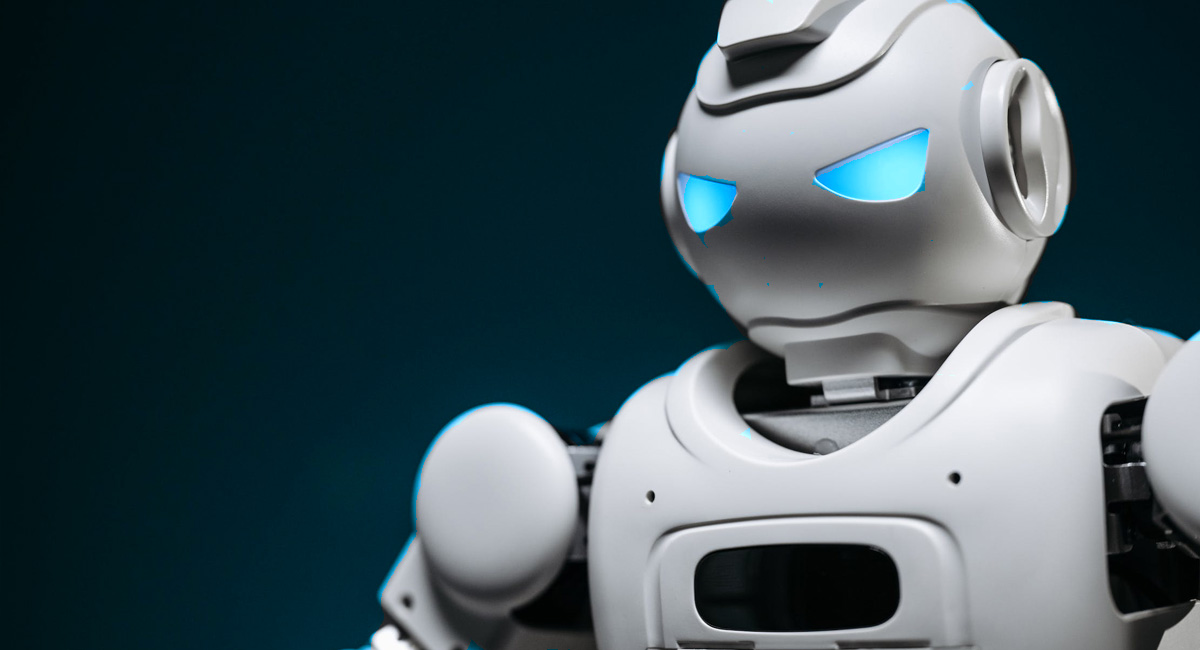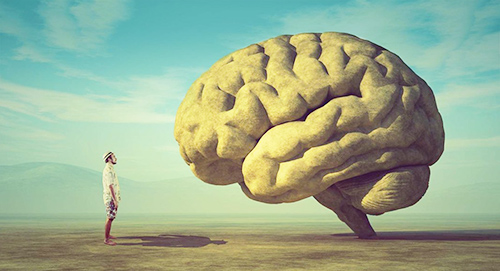Popular searches
Categories
Learn & Achieve
Collaborate & Lead
Deliver Value
Make Better Decisions
Industry Knowledge
Live Well
Sub categories
Learn & grow
Set & reach goals
Be more productive
Manage projects
Behavioural economics
Collaborate & influence
Models

 0 saved
0 saved
 19.1K views
19.1K views
(1)
Share this with your network








Share this with your network




Overview
Let's face it, behaviour change is hard... really hard.
You know what you're meant to be doing – more exercise, eating better, sleeping more, reading more books, and the list goes on and on. Back to reality, are you really happy with your daily habits and behaviours?
This Playbook won't offer you any magical solutions, but it will arm you with practical techniques to shift your behaviours and embed the habits that you really want.
This Playbook includes the following sections, select a heading to jump to that section.
CHALLENGE YOUR MINDSET
Changing your behaviour will require changing the way you think and relate to your current behaviours. Use these approaches for the best impact.
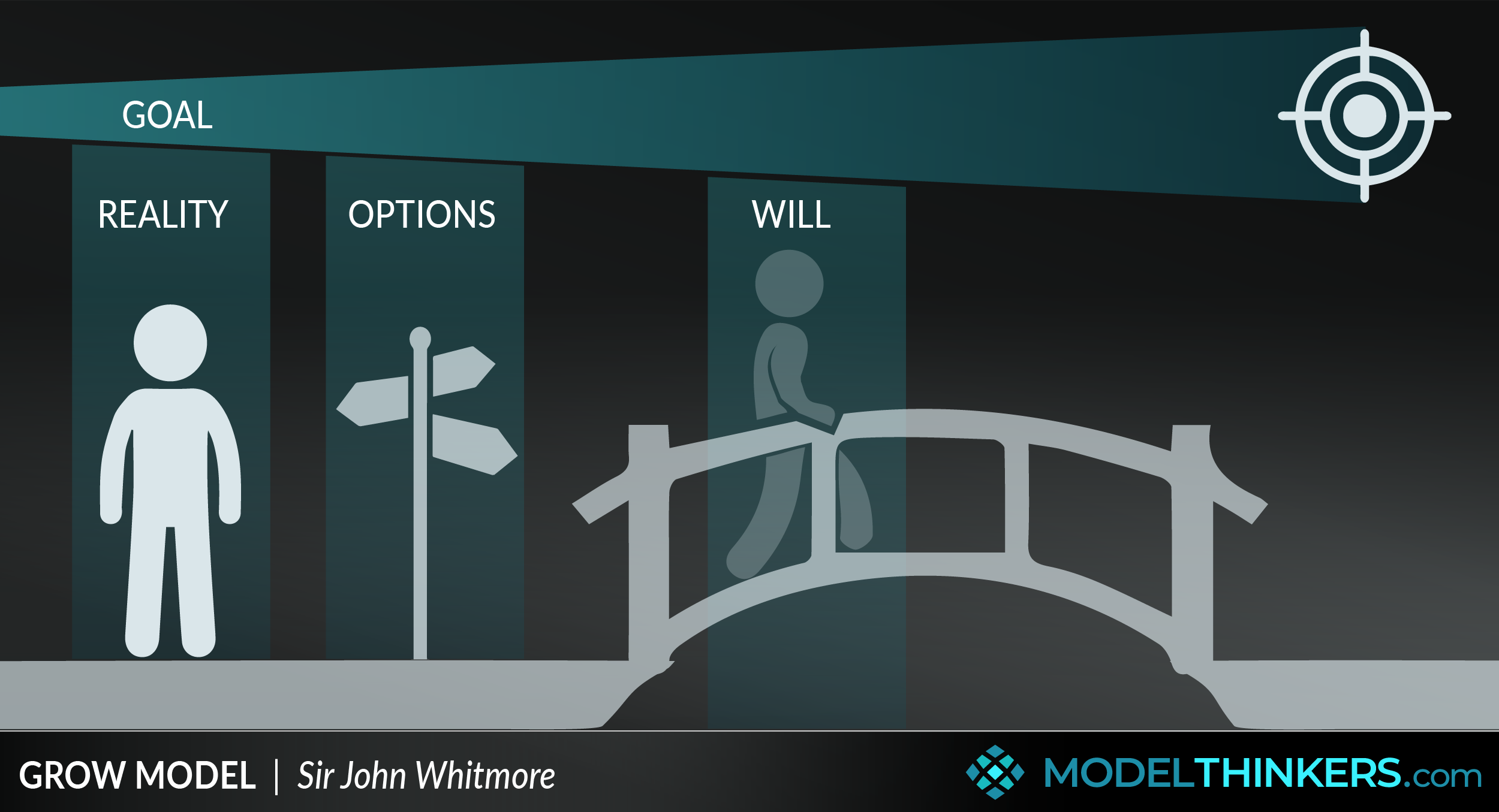
Whitmore's classic coaching framework can serve as a self-coaching framework to shift and challenge yourself.

Behaviour is often driven by emotional and subconscious feelings. Rock's SCARF Model is a useful reference to begin to understand what your real obstacles and drivers are.
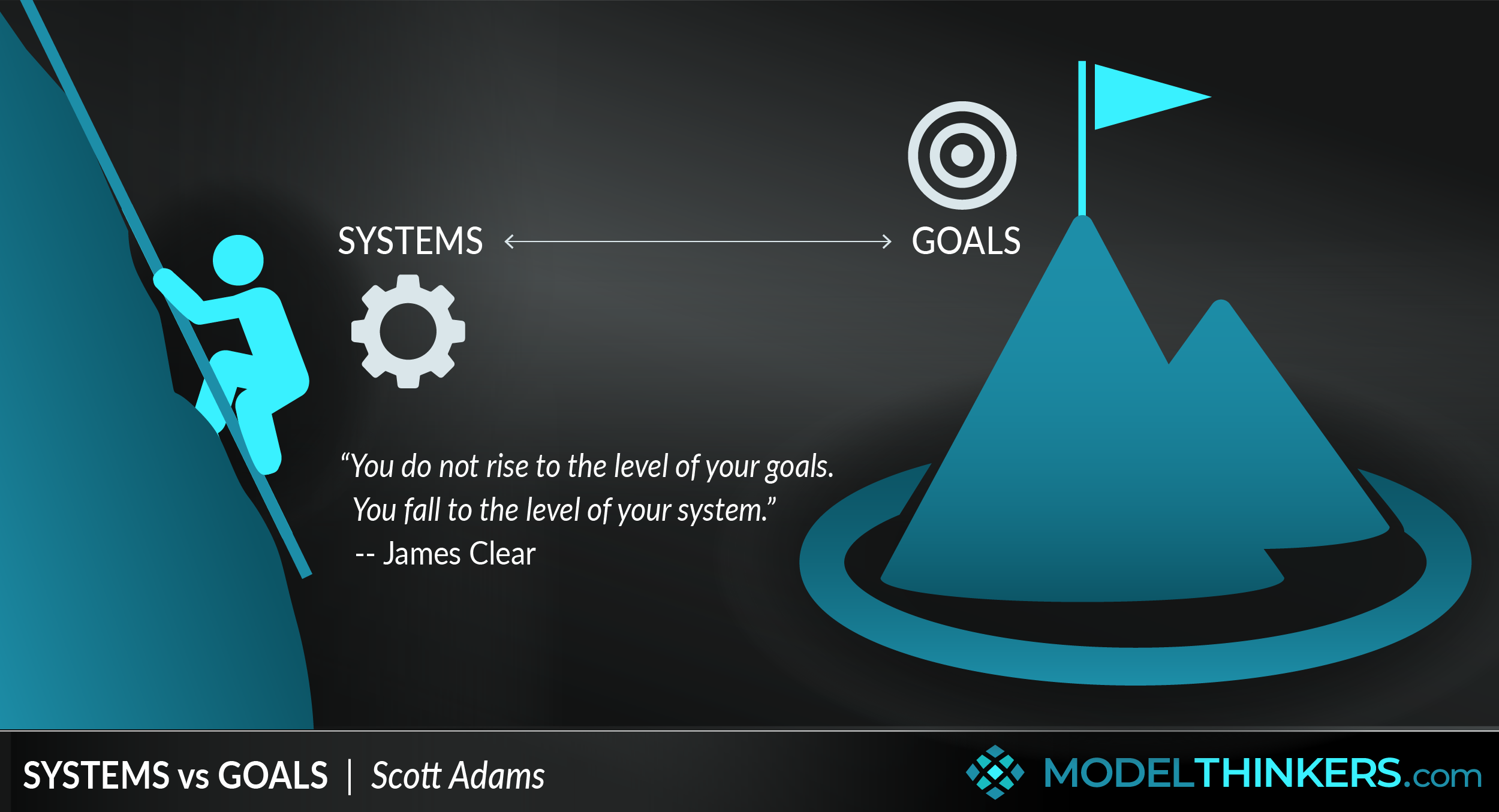
Goals can be great drivers for behavioural change, but if they just seem intimidating it might be time to refocusing your energy on systems. For example, stop obsessing about writing that book, just focus on writing each day.
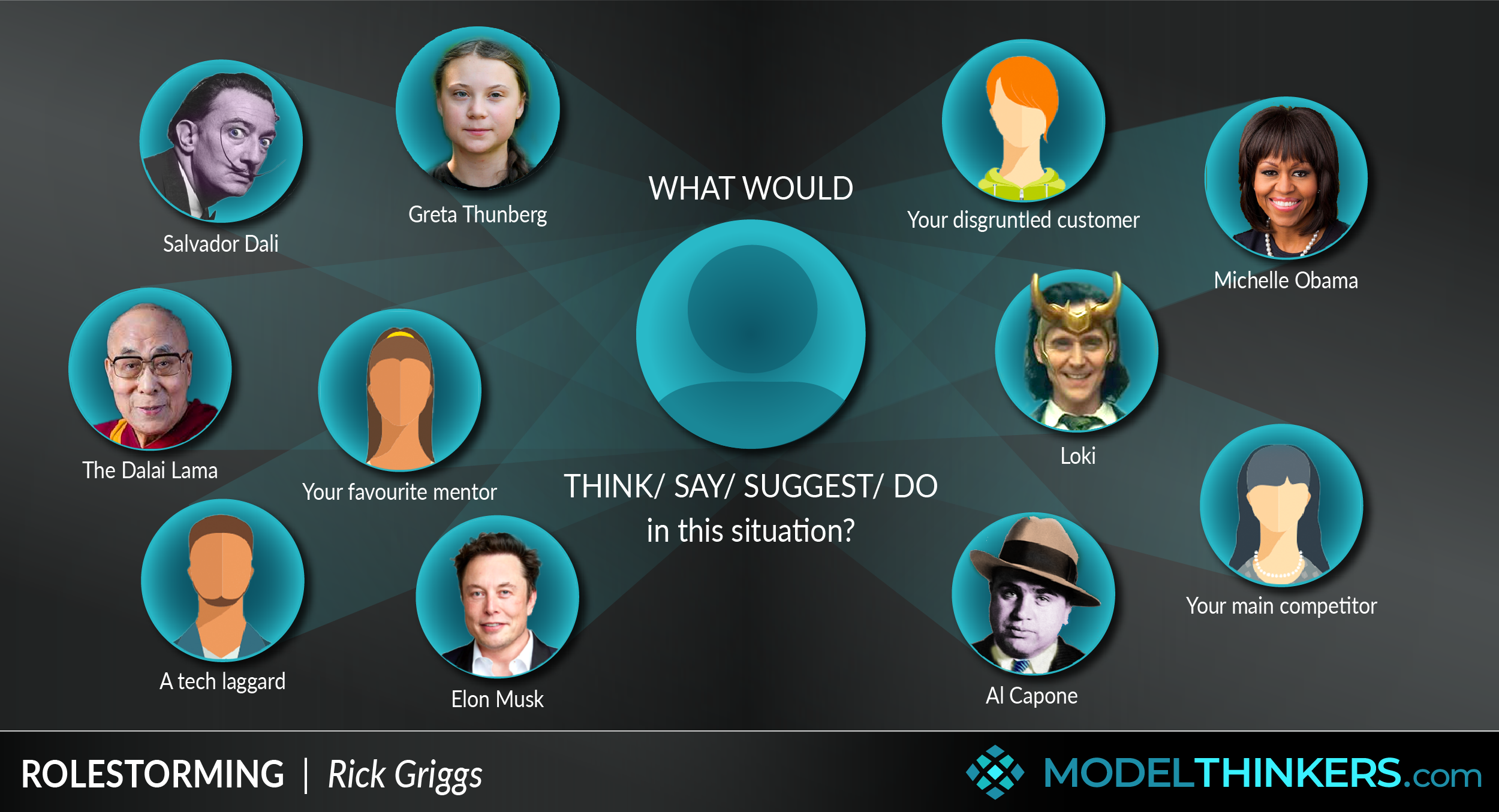
James Clear from Atomic Habit fame points out that core to shifting habits long term is a shift to your identity. Rolestorming is often used to innovate, but can be used to challenge your identity as you ask, for example, 'what would a healthy person do here?' As you mimic that behaviour, soon you'll develop evidence to challenge your current identity that you are a healthy person.
START MAKING CHANGE.
The first few steps are often the hardest, so use these techniques to start building momentum.

No, it's not just your imagination. Moving into action is often the most difficult step you'll make. Understand it, mitigate and plan for it.
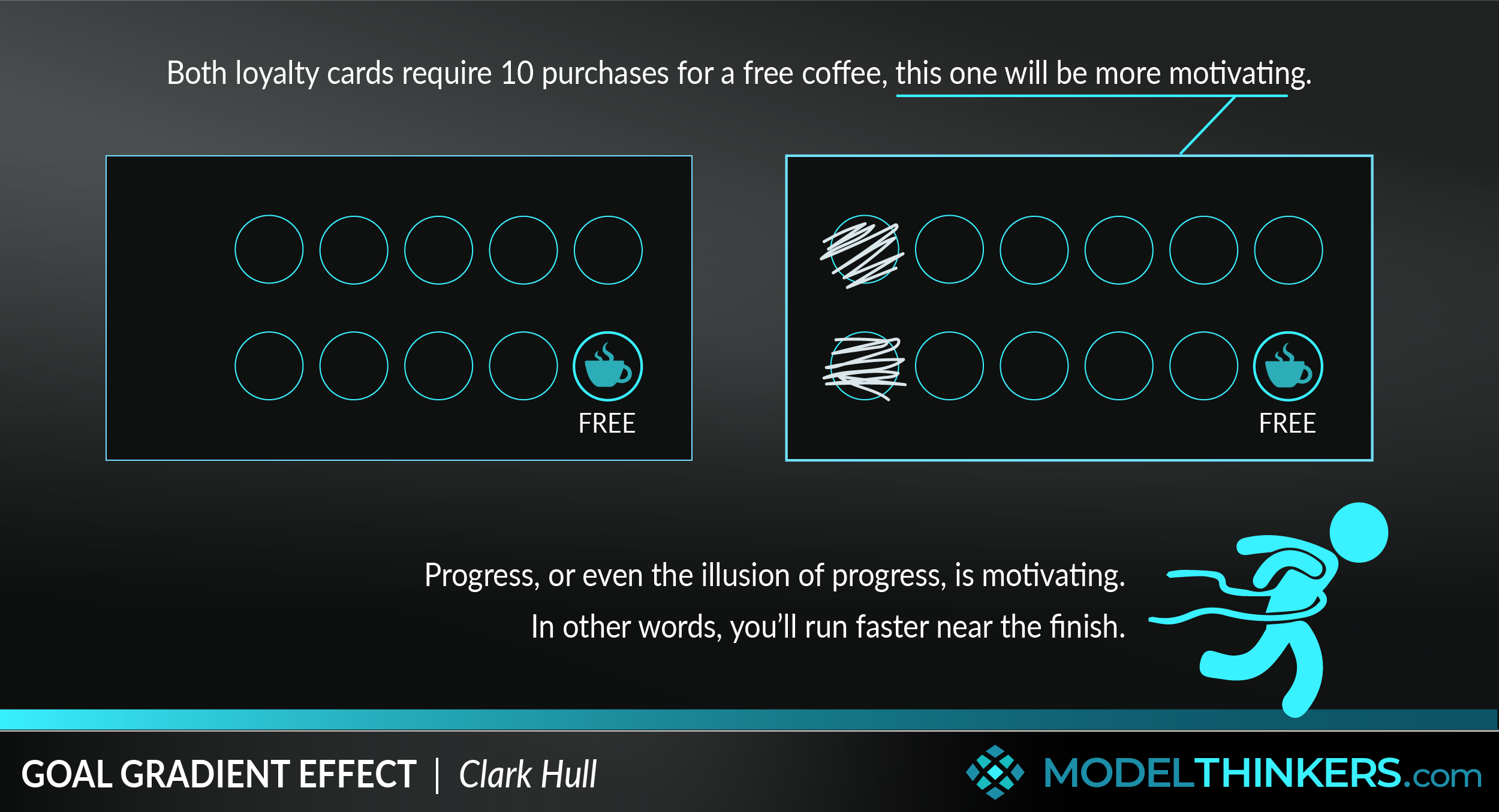

It's easier to trick yourself into thinking you've made progress than you might think. Consider what you've already achieved and acknowledge that to take advantage of the Goal Gradient Effect.
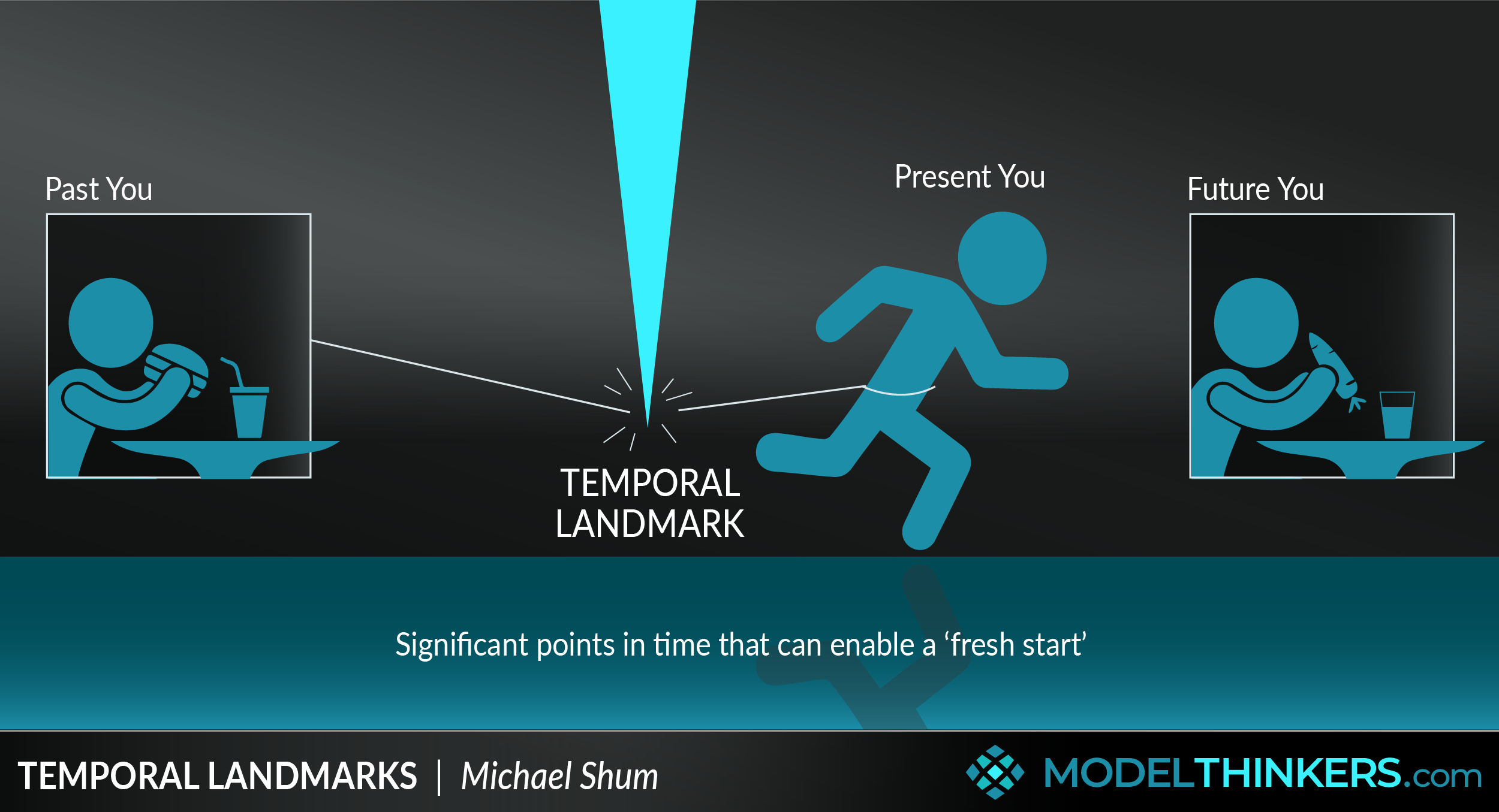
You'll more likely be able to change your behaviour if you leverage Temporal Landmarks.

Stop trying to change it all, start small and build up momentum. For example, the classic advice for change is to 'make your bed' in the morning and see how that one change can domino into other shifts over the day.
MAKE & EMBED CHANGE.
Time to get serious with embracing and embedding your new behaviours as habits.
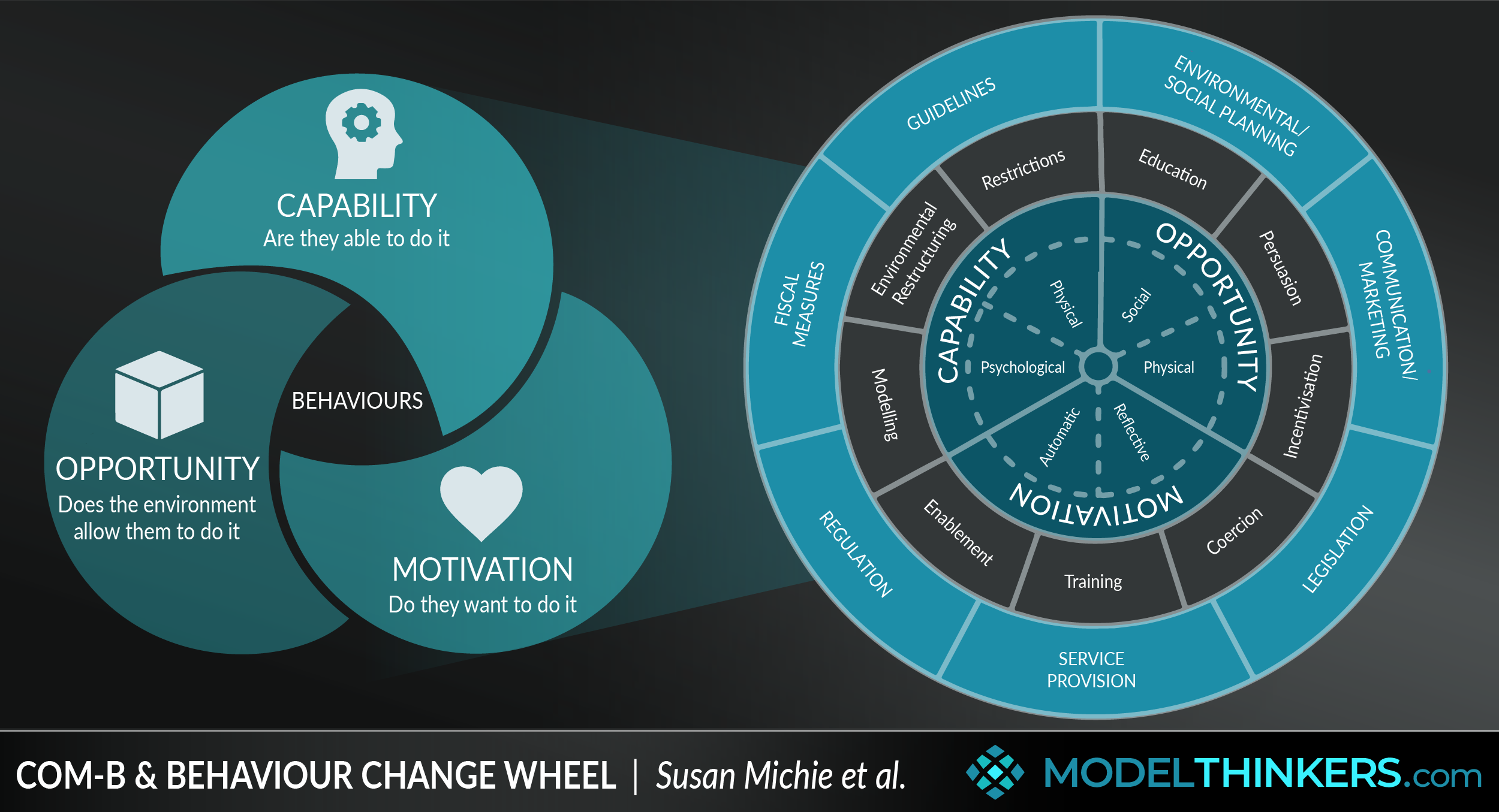
The summary of 14 change models, COM-B and the associated Behaviour Change Wheel will help you identify what sort of intervention you can make to achieve the behaviours you want.
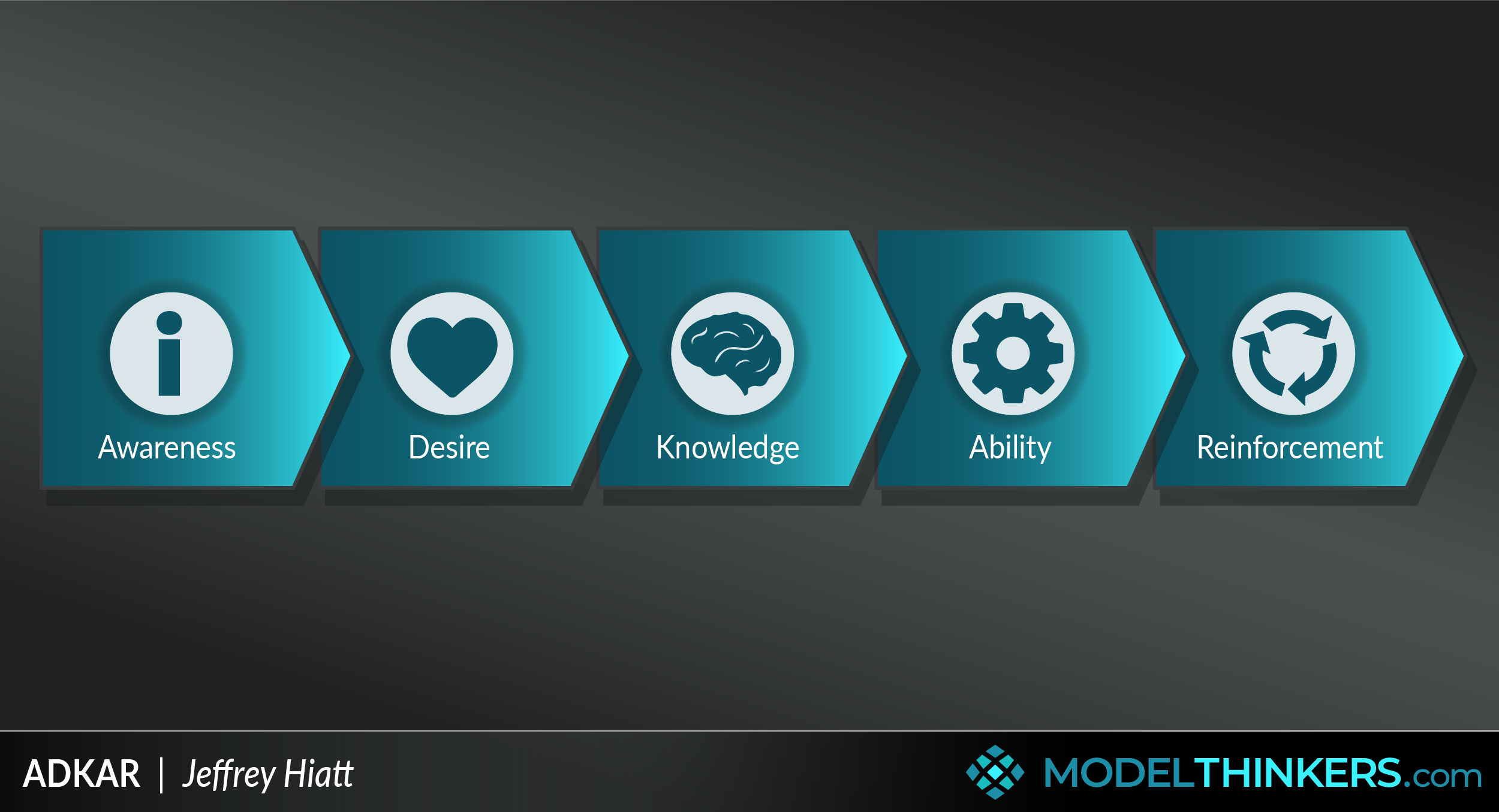
This classic Change Management model can be used at a personal level, even as a checklist for you to work through key elements to ignite your change journey.
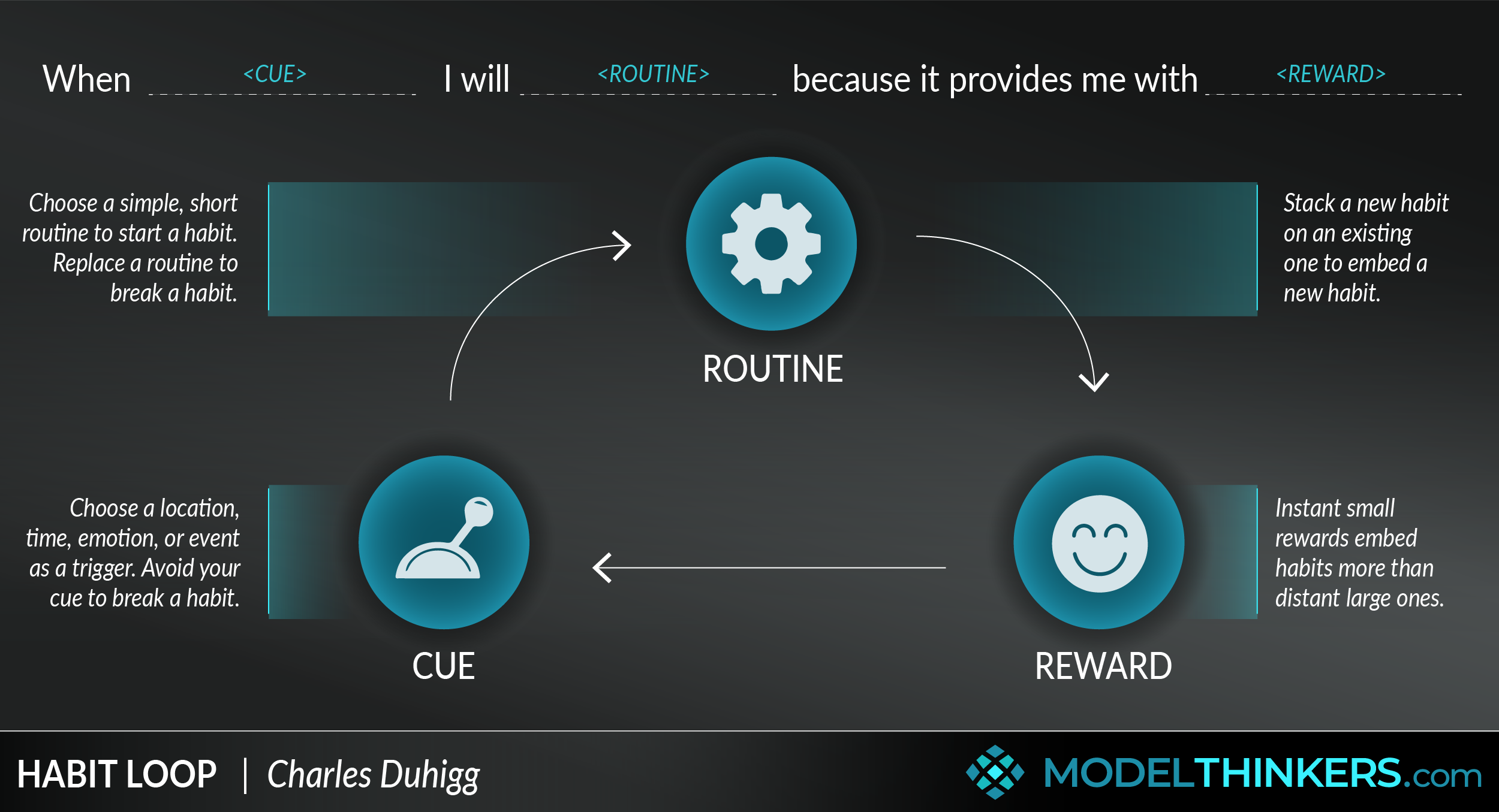
If you want to change or introduce habits, you need to understand the Habit Loop, Habit Stacking and the power of small, immediate rewards.
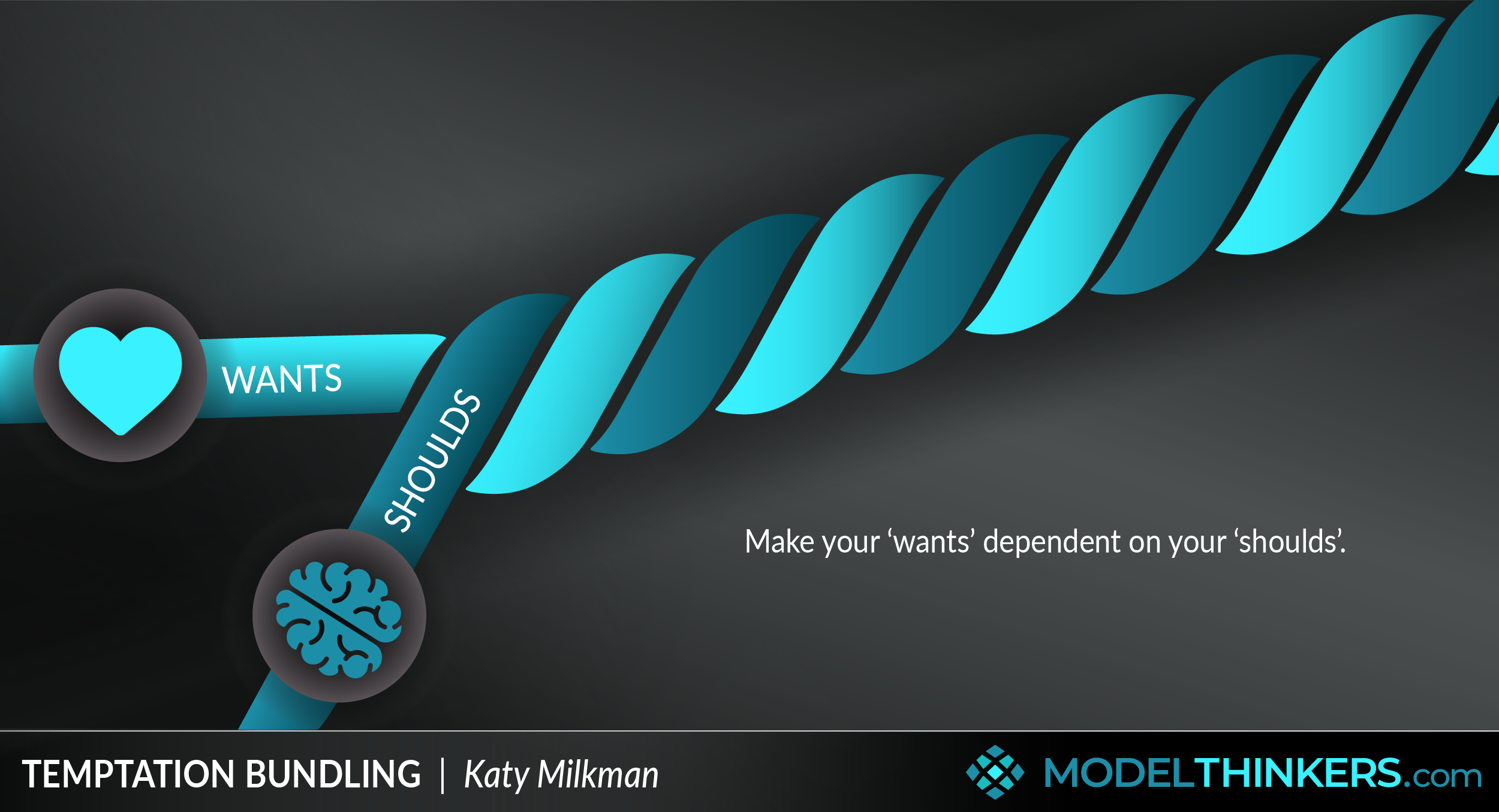
Another addition to Habit formation, tie your shoulds to your wants with Temptation Bundling.
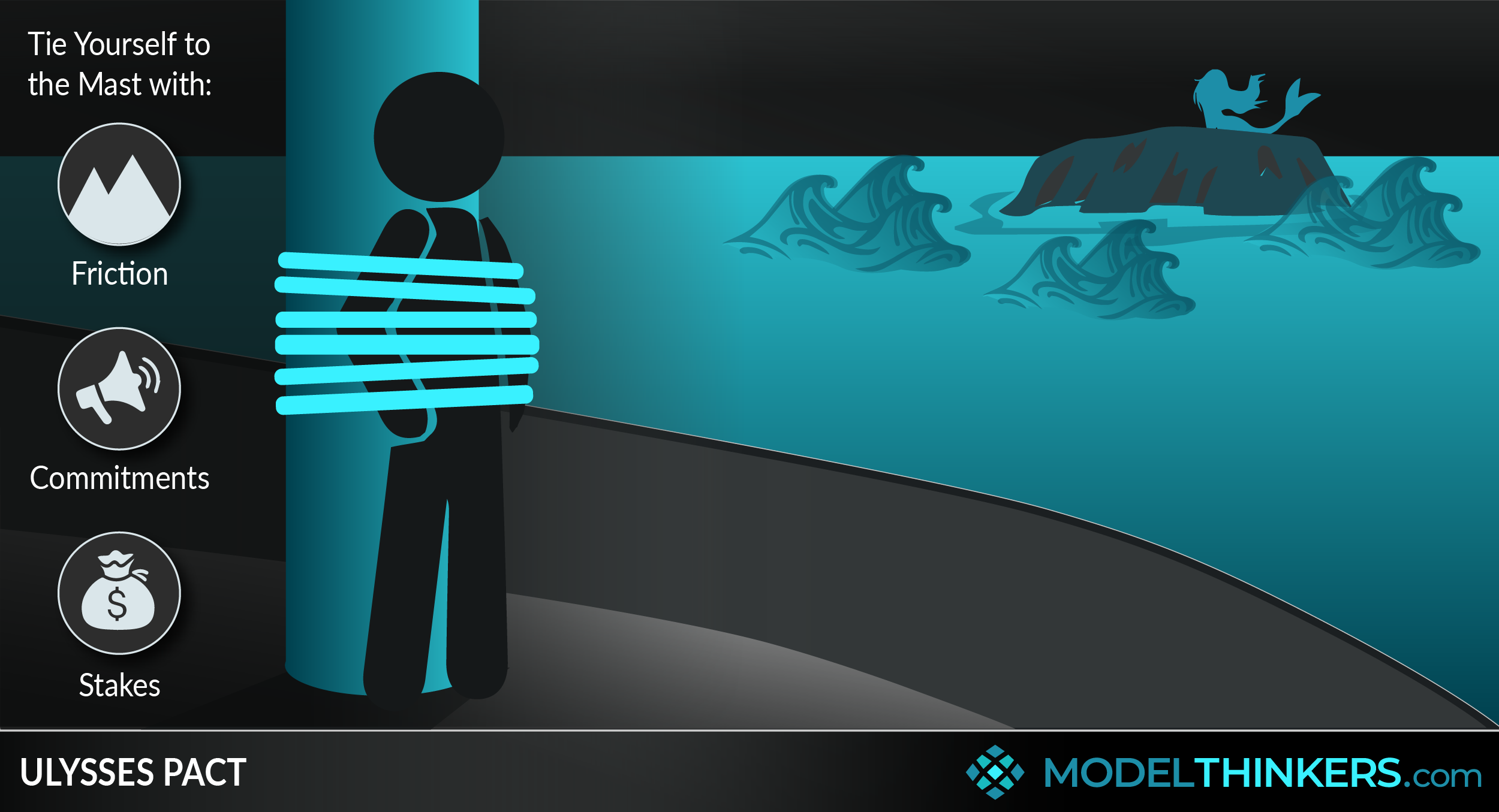
We said from the start that behaviour change is hard. That's why it's worth investing in planning to use Ulysses Pacts to tie 'future you' to the path you want.
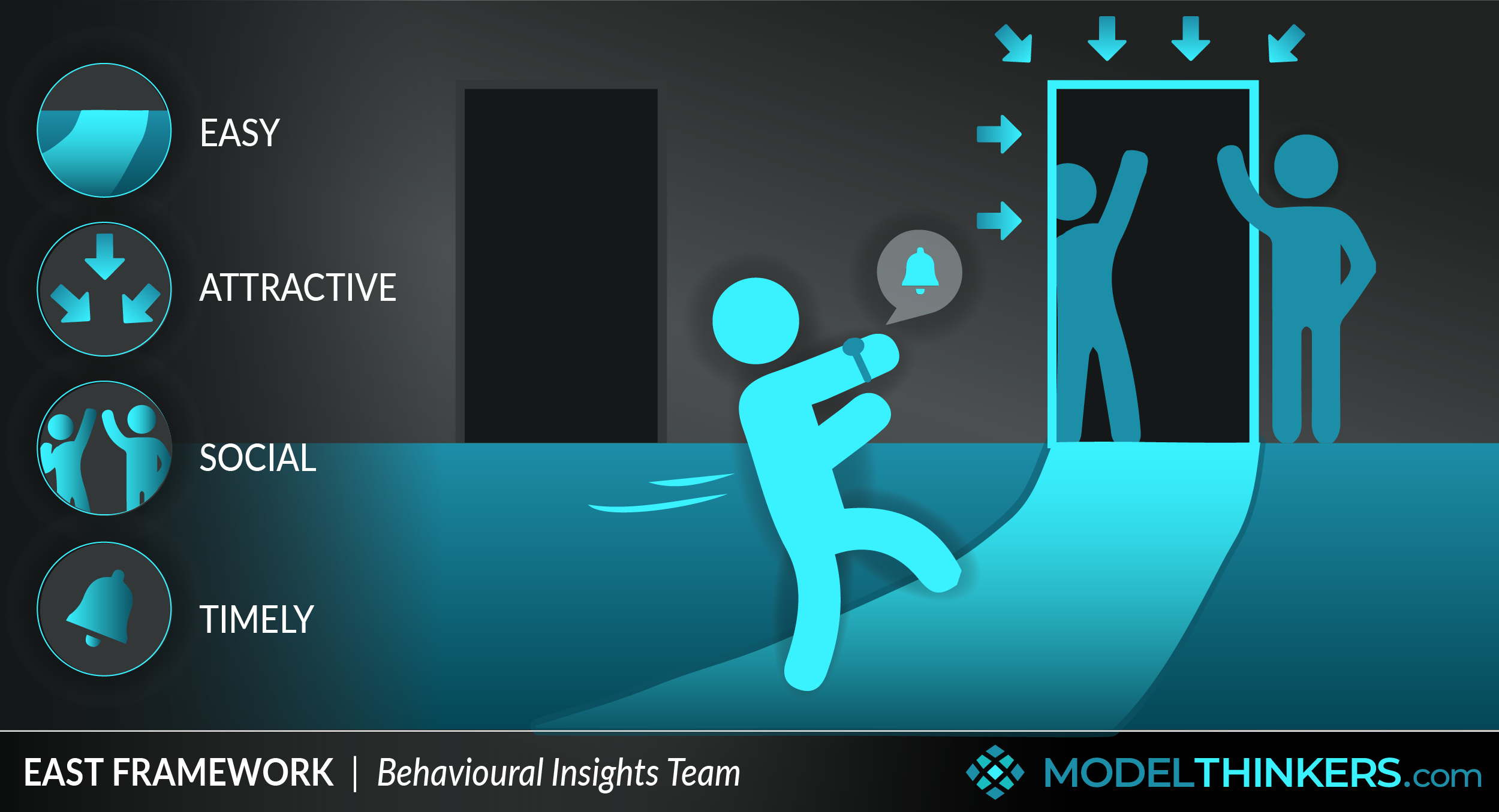
And finally, along the same lines as Temptation Bundling, the EAST Framework is your 'Nudge Design Guide' that will help you to stay on track despite yourself.
Premium content
Please do login or sign up to see premium contect
Subscription expired!
Please renew your subscription to access this feature.
 My Notes
My Notes
Delete note
Nothing here yet. Join ModelThinkers and login to be the first to comment.

